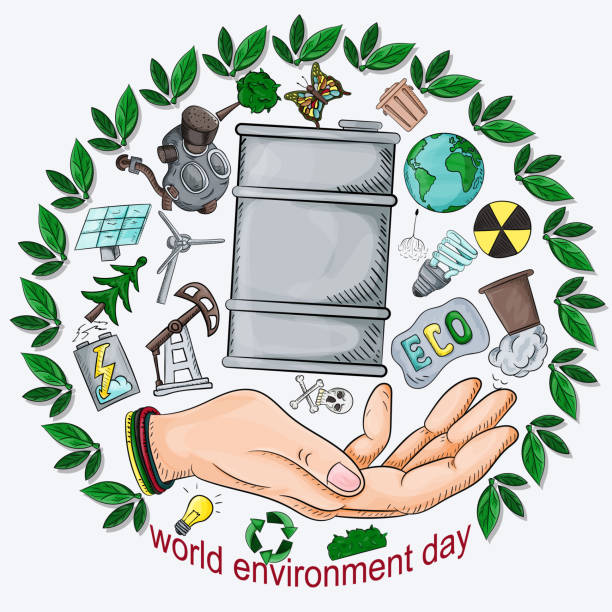
Circular economies are often seen as a progressive alternative to the linear economy that is based on wasting raw materials to produce products to feed today’s rampant consumerist appetite. Although the idea of the circular economic system was first introduced in the 1980s, it doesn’t mean the practices that make up a circular economy are new. These include repairing, refurbishing, and repurposing. All these strategies aim to keep materials in use, whether they are objects or their raw components. All are not revolutionary.
Repurposing objects and materials is as old as the use of tools themselves. In Palaeolithic times, small flint axes were converted into smaller flint axes. Neolithic people reused standing stones for tombs. This is evident in Locmariaquer, France. Ceramics were also recycled, as they are made of clay and thus readily available. Often, old pottery is ground into powder to be used as clay in new pots. This ceramic powder, known as grog, was used on Minoan Crete to make the mudbricks that were used for building houses.
Spindle whorls, made of pot fragments, are found regularly at the Bronze Age site I excavated in Hungary. The large stones found at this site are a source of confusion for interpreters because they have been used and repurposed in countless ways, from anvil to grindstone and door-to-wall support. Up until the early 20th century, material culture was often dealt with through repair, reuse, and repurposing. The linear wasteful economy’s dominance is a historical anomaly when it comes to resource usage.
We must be cautious not to fall victim to the “noble Savage.” No, our ancestors weren’t eco-saints. They polluted the environment through mining, burned entire forests, and created huge amounts of waste. Monte Testaccio is a large artificial mountain in Rome that was made entirely from broken amphorae.
People are more tolerant of a wasteful, exploitative attitude when things are plentiful. In the past, things were scarce, and a circular economic practice was developed. It was not a result of an ideological motive but rather out of necessity.
Prehistoric Recycling
Archaeologists don’t usually use the term circular economy and refer to the examples above as “reuse.” It could be that this is why core circular economy practices aren’t discussed as widely. Recycling is no different.
Suppose one uses a broad definition of recycling, such as employing previously discarded items; the roots of this practice date back to the Paleolithic era. Let’s concentrate on recycling today. This is the practice of converting waste (used items) into raw materials for new products.
The practice of total transformation has been part of human behavior for much longer than you might think. As early as the Bronze Age, it was the main practice of an economic system.
Prehistoric humans created bronze around 2500 BC. They combined copper with tin and did so regularly. This artificial material was widely adopted, causing significant changes. The economics of societies changed because the production of bronze required long distances to move materials. The intensification of trading was a result of connecting sources and end users. The Bronze Age was a crucial epoch for the formation of Europe. It saw the rise of pan-European trade networks and exchanges.
Bronze also influenced people to think differently. Metalworking is a very different process from earlier crafts. The removal of materials is what makes wood and stone carving reductive. Additive technologies include basketry, weaving, and pottery. Bronze is a different technology in that it’s a transformative one. The raw material is melted to liquid form and then poured into the mold. Molds were the first blueprints that documented the design and production of an object. It may not seem very exciting now, but this was a revolutionary way for prehistoric people to work with materials.
Imagine that your stone axe breaks. You could reuse the pieces but not remake them. If your bronze axe was broken, you could remelt the metal and make the same axe again. The Bronze Age was the first time recycling as an economic practice was introduced.
Circular economies
was not the only metal used this way. The origins begin with the hammering of pure copper into shape. It was not until the Bronze Age, however, that large-scale recycling began.
All over Europe, from the Middle Bronze Age, bronze was recycled. Archaeologists analyzed hundreds of metal objects and found that elements were depleted as a result. A lot of “old” metals were traded. A wreck found off the coasts of Dover contained a large number of French bronze items dating back to 1100 BC. These objects were destined for recycling in the UK.
The circular economy is a term that we may want to use in the future, but its practices have been a part of the human experience for ages. The Bronze Age was the first time a circular economic system was put into practice. The economy of the Bronze Age was based on recycling. Once we understand this, it becomes clear that the circular economy is not new. It is not the circular economy but the linear and wasteful one that is anomalous.
It’s a beautiful thing that we can use the past for good. The circular economy’s core values are rooted in history. They can be used to inspire and shape a modern craft that is centered around durability and sustainability.
